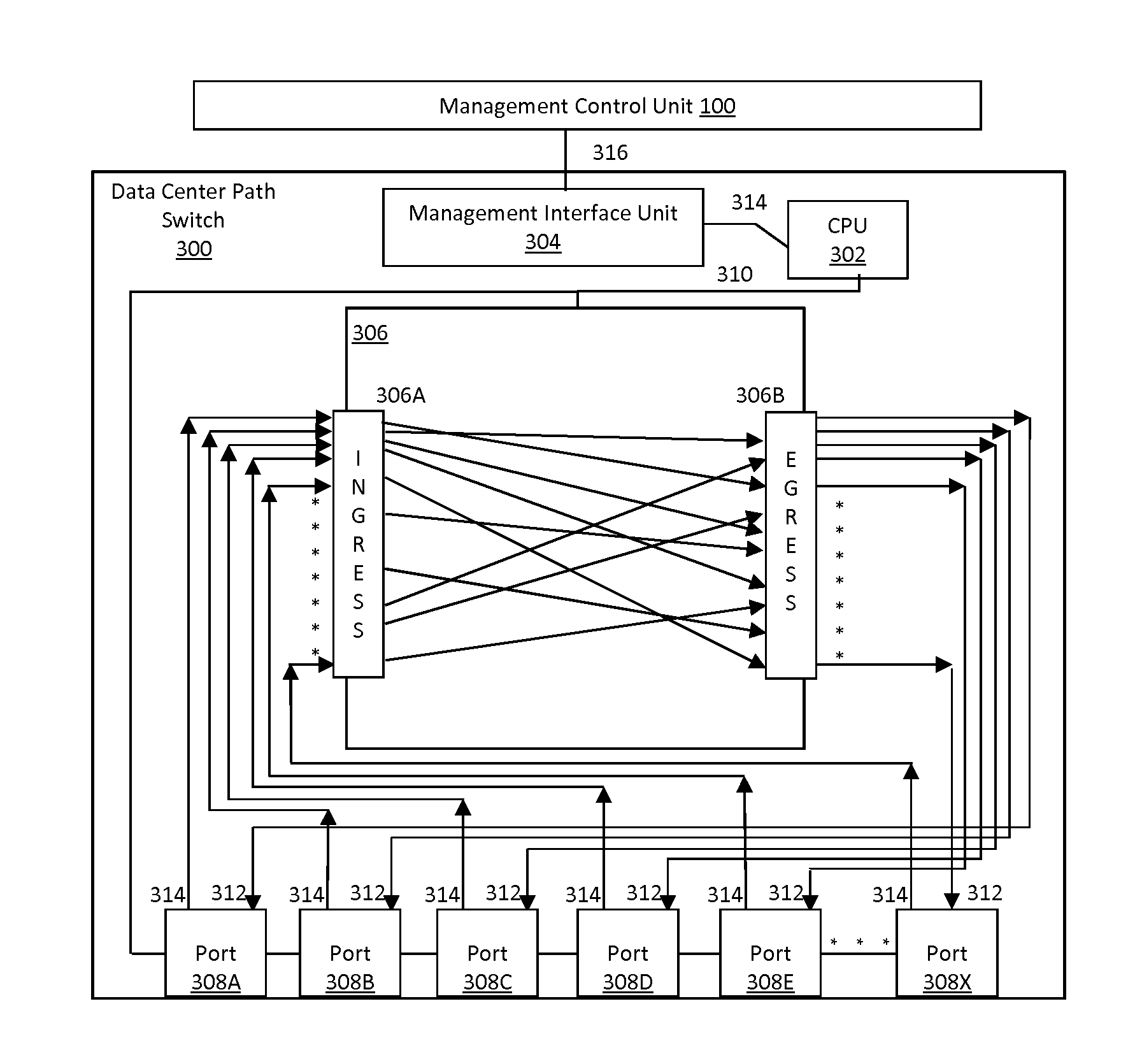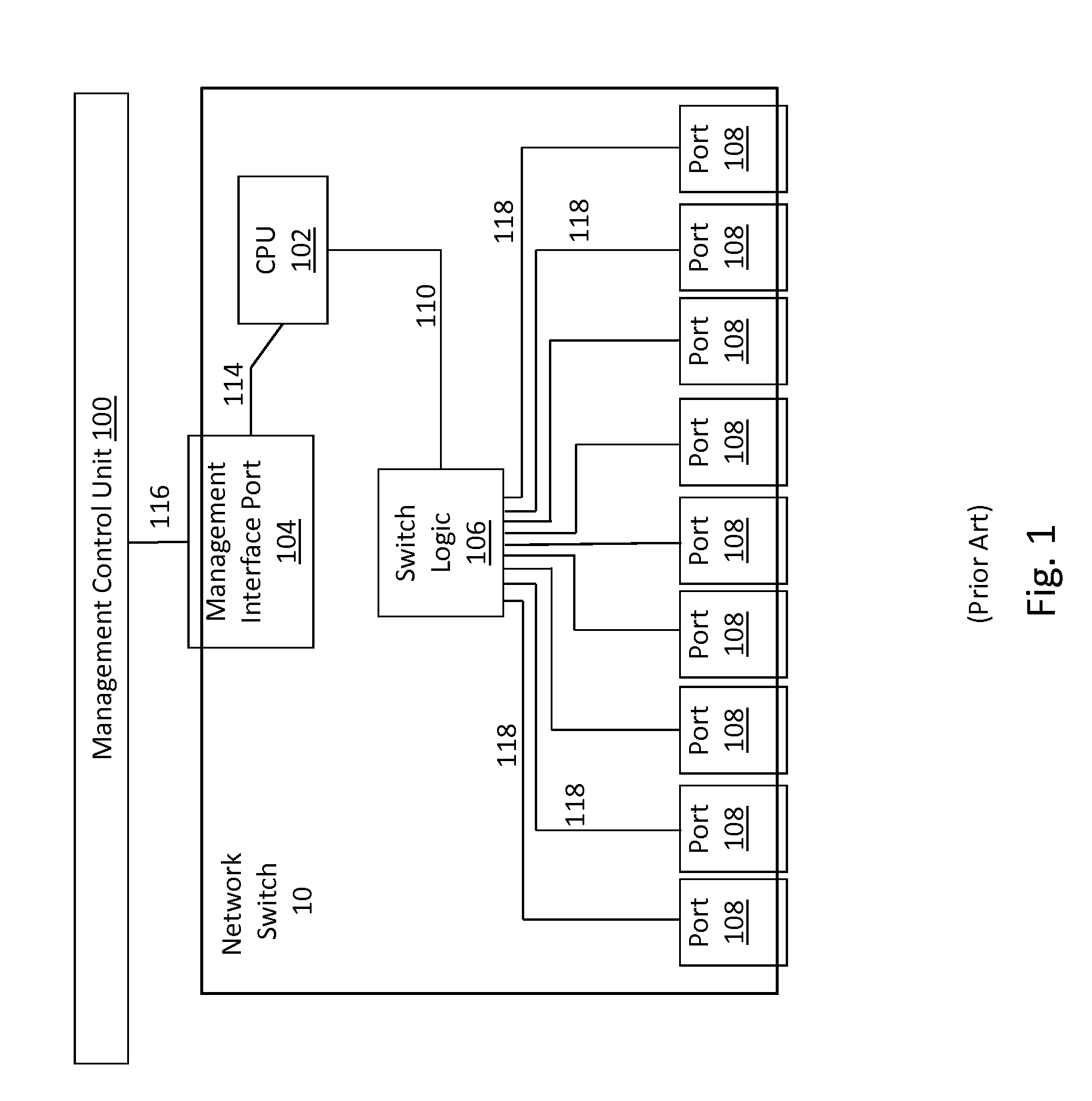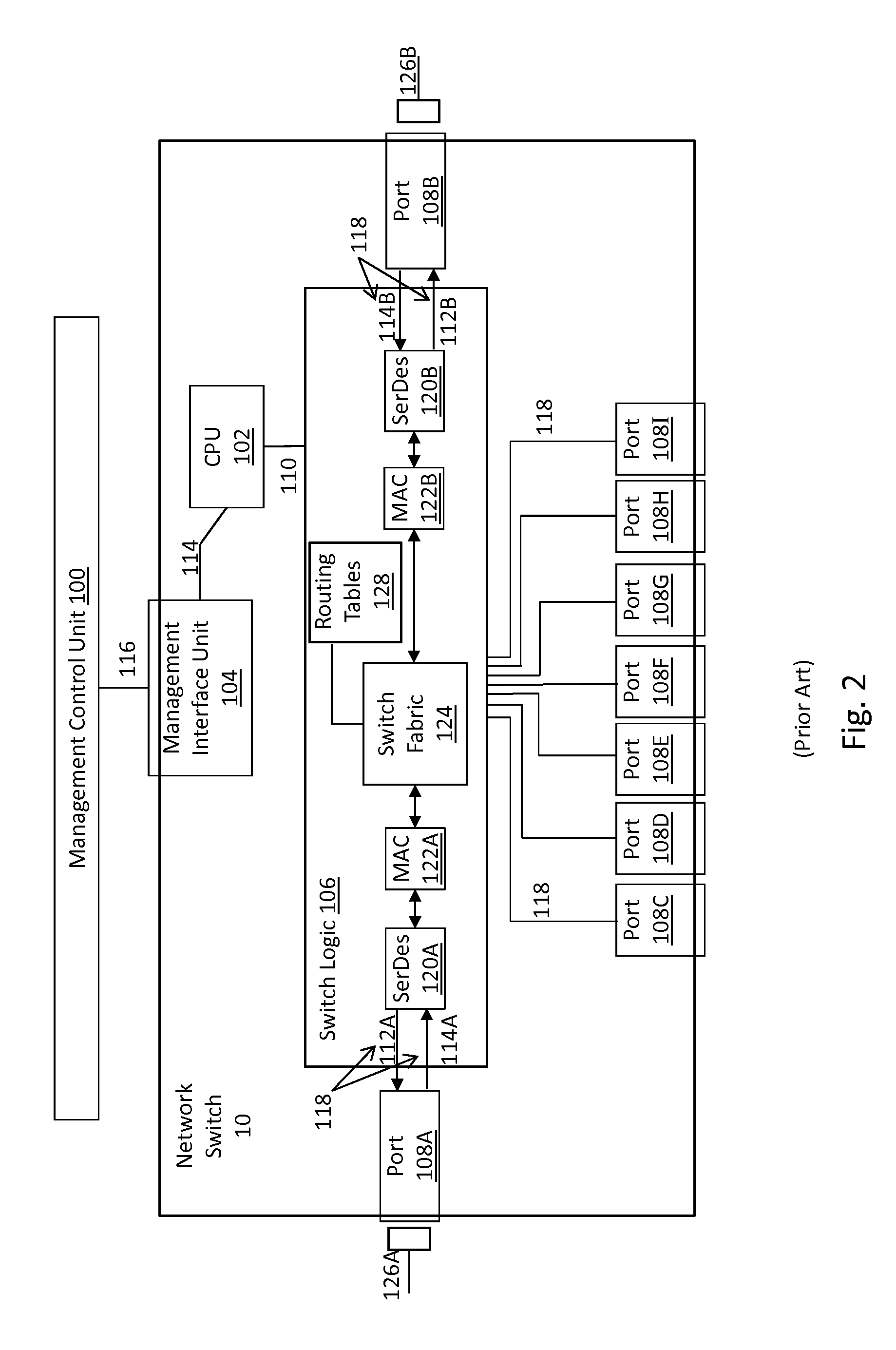Data center path switch with improved path interconnection architecture
a path switch and path interconnection technology, applied in the field of data center path switches, can solve the problems of complex computer system operation and maintenance, data center operation and maintenance is typically very expensive, and the average time for data center operation and maintenance is 500 nsec per second
- Summary
- Abstract
- Description
- Claims
- Application Information
AI Technical Summary
Benefits of technology
Problems solved by technology
Method used
Image
Examples
Embodiment Construction
[0048]Referring now to FIG. 3, an exemplary architecture of the path switch 300 according to the present application is provided. In this embodiment, the path switch 300 includes a set of ports 308, path interconnection unit 306, management interface unit 304 and CPU 302. The number of ports 308 and the bandwidth per port of the set of ports 308 is generally set by the capability of the path interconnection unit 306. Preferably, the ports are transceiver ports capable of receiving Physical Layer signals from various mediums, converting the signals into a form that can be routed by the path interconnection unit 306, and converting signals from the form routed by the path interconnection unit 306 to a form for transmission as a Physical Layer signal through a port 308 onto an external medium capable of handling such Physical Layer signal. The configuration of the data center path switch is such that the latency between an input port and an output port is less than 500 nsec, and prefer...
PUM
 Login to View More
Login to View More Abstract
Description
Claims
Application Information
 Login to View More
Login to View More - R&D
- Intellectual Property
- Life Sciences
- Materials
- Tech Scout
- Unparalleled Data Quality
- Higher Quality Content
- 60% Fewer Hallucinations
Browse by: Latest US Patents, China's latest patents, Technical Efficacy Thesaurus, Application Domain, Technology Topic, Popular Technical Reports.
© 2025 PatSnap. All rights reserved.Legal|Privacy policy|Modern Slavery Act Transparency Statement|Sitemap|About US| Contact US: help@patsnap.com



